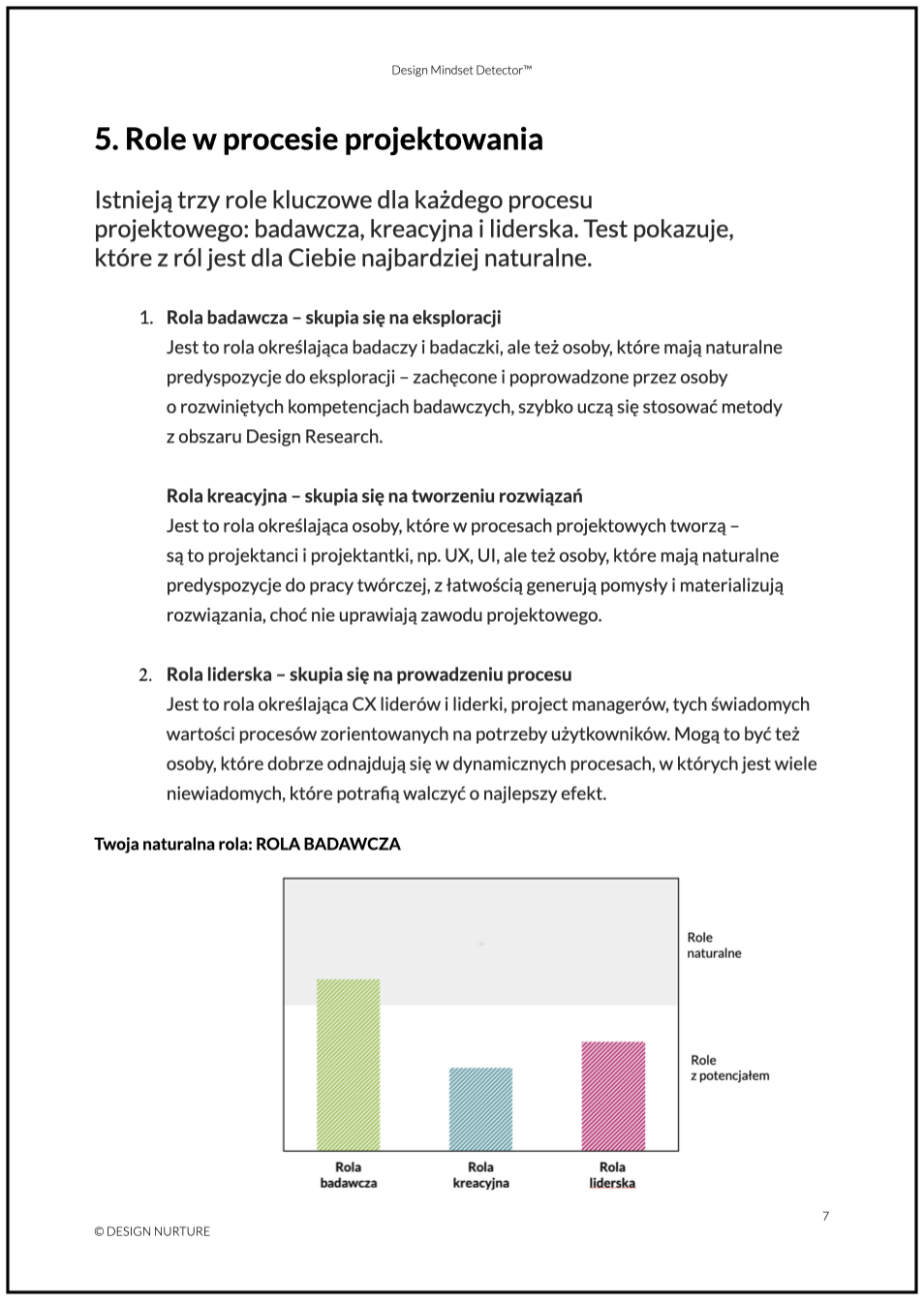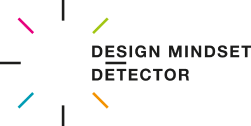What is the Design Mindset Detector™ and how does it work?
The Design Mindset Detector™ is an online questionnaire that measures individual predispositions for applying the Design Thinking approach and supports the development of competencies important in work related to Customer Experience and Innovation.
Design Mindset Detector™
The Design Mindset Detector™ is a professional psychometric tool for measuring and developing predispositions essential for carrying out projects using the Design Thinking approach. It consists of several elements:
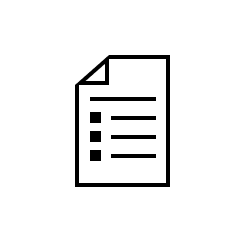
1. Test
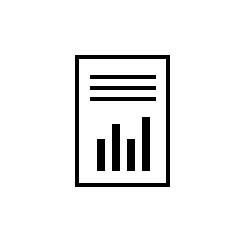
2. Report
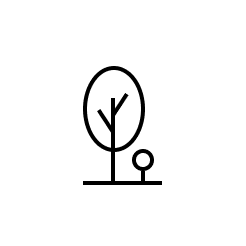
3. Development
Design Mindset Detector™ examines nine key predispositions for applying Design Thinking, which consist of four areas:
Openness to people, their needs, and collaboration with them. It’s sensitivity to other people, willingness to be with them, and understanding them. Key here is recognizing the value that arises as a result of the collaboration of different individuals and the merging of different perspectives.
Predisposition: People Focus
Predisposition: Design Empathy
Curiosity about everything new, a natural enthusiasm for action. The desire to grasp a broad perspective of challenges, inquisitiveness, and readiness to accept new information while working on a specific solution. It’s also important to swiftly transition from talking to action.
Predisposition: Holistic Thinking
Predisposition: Empirical Intelligence
Determination in pursuing goals, even if it involves risk. Characteristic of this group of behaviors is the desire for continuous learning, mainly through action, including learning from mistakes. There’s a need to influence the surrounding reality. Perseverance in overcoming difficulties, readiness to change approach and reformulate the problem, always keeping in mind the best possible solution.
Predisposition: Learning through Experimentation
Predisposition: Need for Influence
Predisposition: Flexible Goal Pursuit
What the Design Mindset Detector™ test looks like
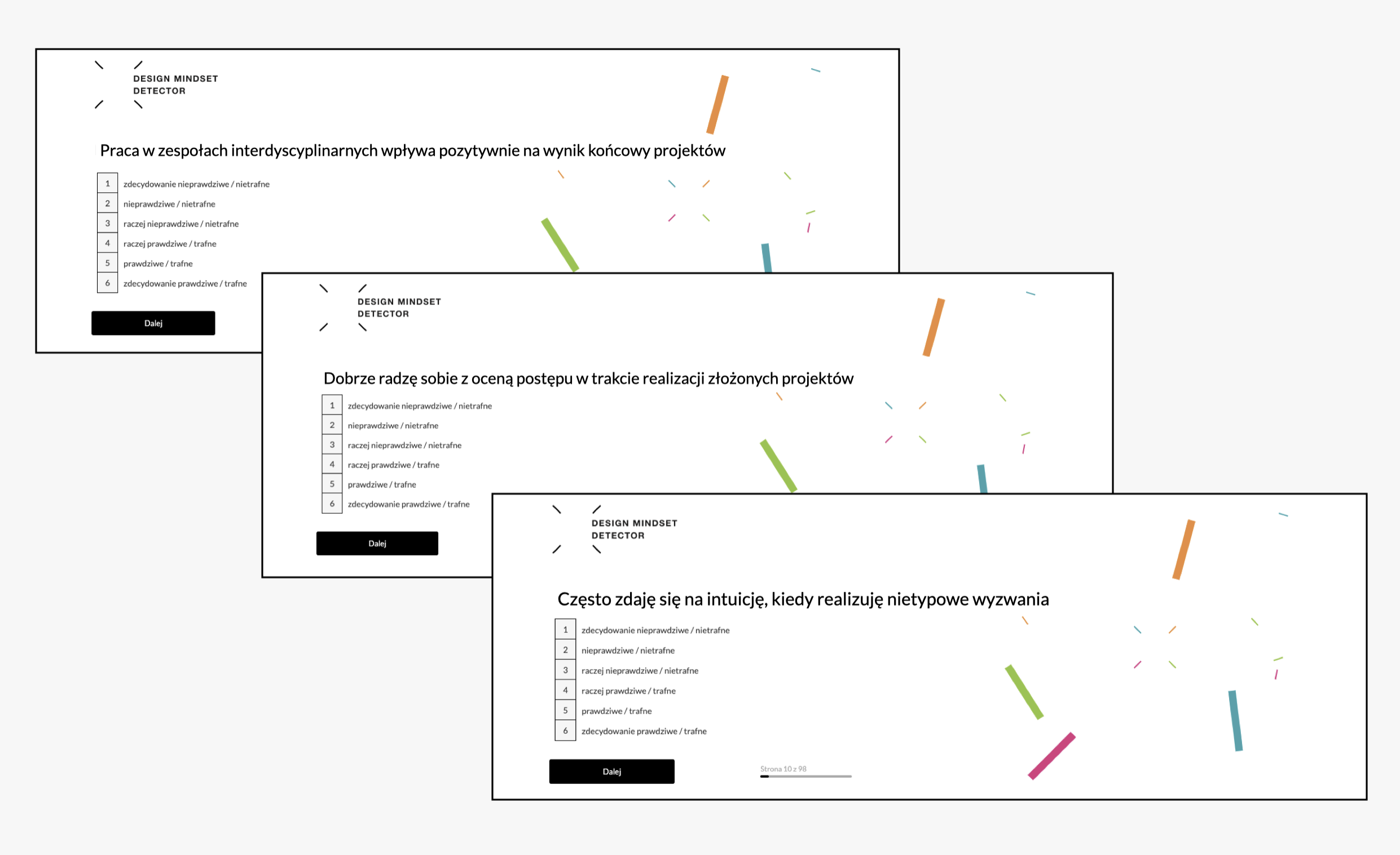
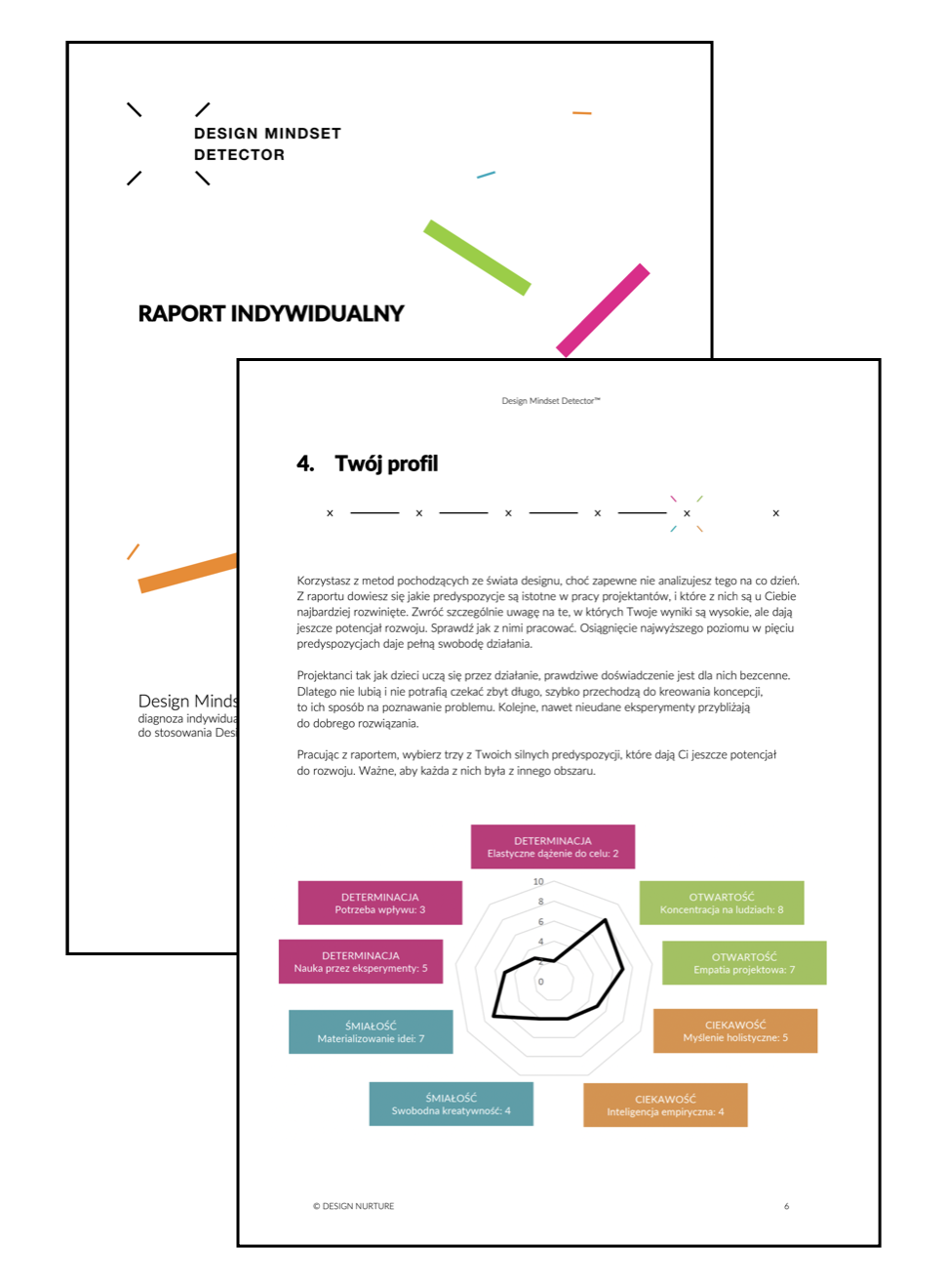
Roles in design processes
- Research Role – Focuses on Exploration
- This role defines researchers and all individuals who have natural predispositions for exploration – they willingly engage in planning and conducting research, are inquisitive, seek information from various sources, ask pertinent questions, instinctively observe users, and draw valuable conclusions. Individuals preferring this role feel most comfortable in the exploration phase and in analysis.
- The research role is indicated by the test result illustrating the dominance of the first three predispositions over the others, namely:
- People Focus
- Design Empathy
- Holistic Thinking
- Creative Role – Focuses on Solution Creation
- This role defines individuals who, in design processes, create – they can be designers, such as UX, UI, but also individuals who have natural predispositions for creative work, easily generate ideas, and materialize solutions, although they do not practice a design profession. Individuals preferring this role feel most comfortable in the ideation phase and in concretizing concepts.
- The creative role is indicated by the test result illustrating the dominance of the next three predispositions over the others, namely:
- Empirical Intelligence
- Fluid Creativity
- Materializing Ideas
- Leadership Role – Focuses on Process Leadership
- This role defines CX leaders, project managers, those aware of the value of user-oriented processes. These can also be individuals who can strive for the best outcome and thrive in dynamic processes with many unknowns. Individuals preferring this role feel perfectly at home navigating the design process and working iteratively.
- The leadership role is indicated by the test result illustrating the dominance of the last three predispositions over the others, namely:
- Learning through Experimentation
- Need for Influence
- Flexible Goal Pursuit
Sample report page with a chart showing naturally adopted roles and those with potential
